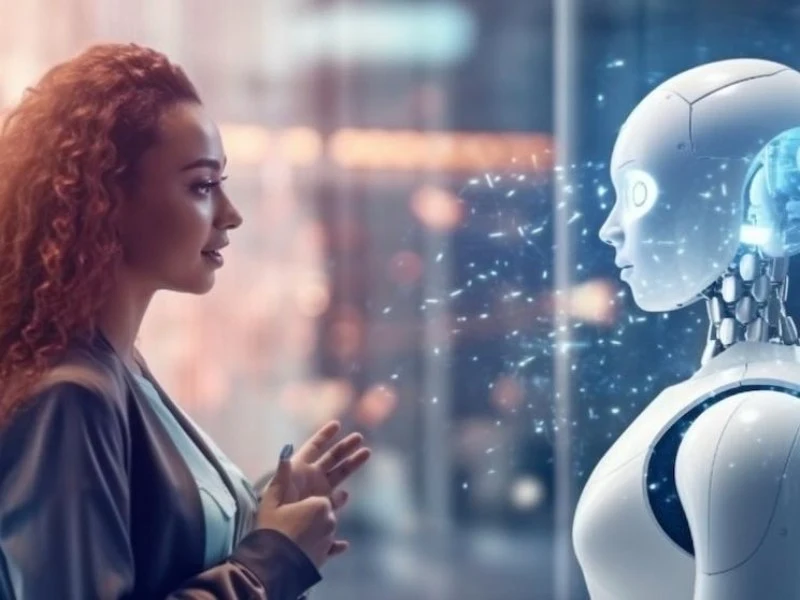- Generative AI produces original content and creations when prompted, while conversational AI specialises in holding authentic and useful two-way interactions with humans by understanding and responding in text or speech.
- The main function of generative AI is to create entirely new content, such as text, images, or even music. What it produces is not directly dependent on user input but uses human prompts to spark a new creation. Generative AI is also used for producing programming code.
- Conversational AI (CAI) facilitates natural language communication by comprehending user inputs, whether text or voice, through Natural Language Understanding. It generates lifelike responses while identifying user intent, recognising entities like dates and names, and discerning user states, such as vulnerability.
Generative AI and conversational AI are both types of artificial intelligence and both use natural language processing(NLP), however, they are used for different purposes and have distinct characteristics. Conversational AI focuses on facilitating human-like conversations between users and machines, while generative AI specialises in creating new content autonomously. Understanding the distinctions between these AI technologies is crucial for leveraging them effectively in various domains and applications.
Also read: Adobe’s new Firefly Image 3 adds genAI features to Photoshop
Concept of conversational AI
Conversational AI, also known as chatbot or virtual assistant technology, focuses on facilitating natural language interactions between humans and machines. These AI systems are designed to understand and respond to user queries, commands, or requests in a conversational manner, akin to human-to-human communication.
Where is Conversational AI used?
CAI interacts with humans in text or voice conversations which makes them perfect for chatbots, virtual assistants, customer engagement and customer service, education, and any other area where human-like interaction is useful. It automates many of the mundane and repetitive tasks that human employees find tedious and time-consuming.
Conversational AI ethics
Conversational AI must be designed to handle user data and conversations with privacy and security in mind. Also, conversational AI chatbots that are used by businesses have to be strictly controlled to stay within compliance rules and regulations.
Also read: Orange launches new GenAI offers end-to-end for French clients
Understanding Generative AI
Generative AI revolves around the creation of new content, such as text, images, or music, that resembles human-generated output. Unlike conversational AI, which focuses on understanding and responding to existing inputs, generative AI generates original content based on patterns learned from training data.
Where is Generative AI used?
GAI is versatile and can be used successfully in chatbots, content generation, creative writing, and producing art and writing music scores. Examples include text generation like with ChatGPT and image generation as used by Midjourney. For instance, the worlds of design and architecture are being challenged by sophisticated GAI capabilities, as are spheres like creative writing and music composition.
Generative AI ethics
Ethical concerns arise with Generative AI (GAI), as it exhibits hallucinations around 15% to 20% of the time, rendering it unreliable for certain enterprise tasks. Moreover, there’s a risk of biased or inappropriate content generation, necessitating constant vigilance from system designers to ensure ethical responses through rigorous training and ongoing improvements. Additionally, the emergence of deepfakes raises ethical dilemmas, manipulating individuals to appear as though they’re saying or doing things they haven’t. Similarly, in the realm of music, GAI is utilised to mimic renowned singers or their distinctive songwriting styles, blurring ethical boundaries.

